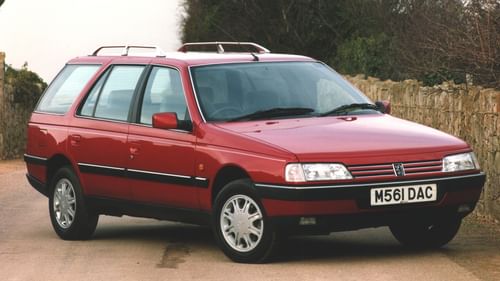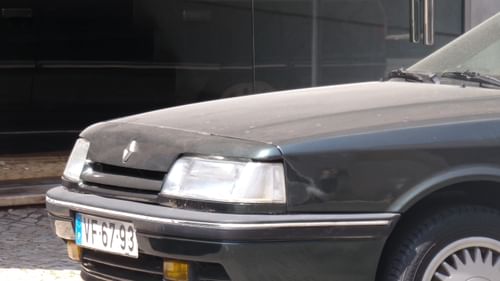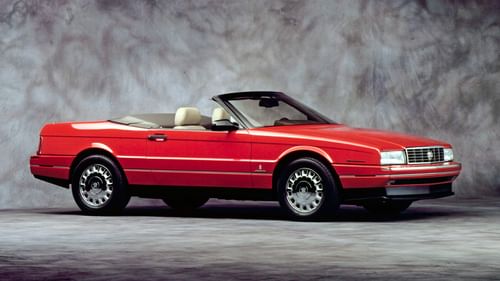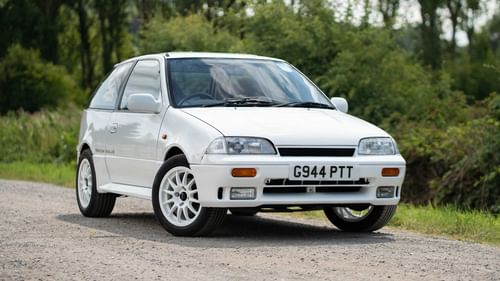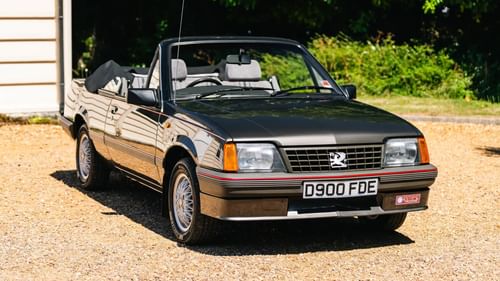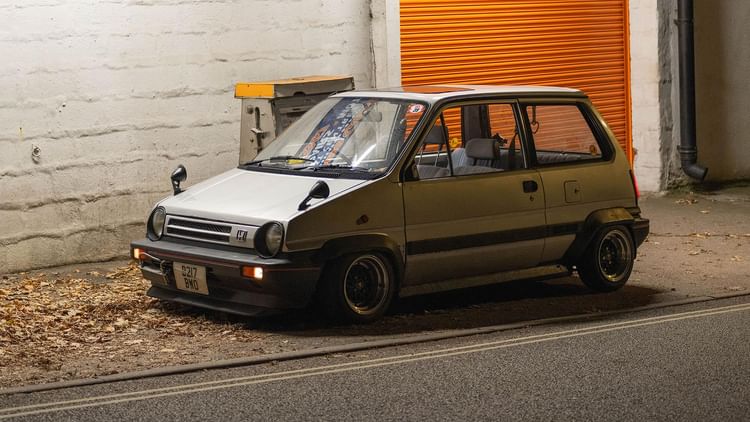
This is the first time I've written anything for a website that isn’t my own and my first real attempt at blogging. I thought I’d start with a short article on a car I owned and modified on the cheap and in record time.
A few years ago, I had some cash burning a hole in my three-quarter-length cargos, so I fancied buying something stupid. A small Japanese car I'd been after for a while popped up for sale: a Mk1 Honda Jazz (City). You know those eco boxes your gran would drive? One of them, but boxy. Anyway, it was available for a grand with no MOT, but from what I'd been told, it was solid.
So I bought it unseen and had it delivered to my mum's house. Unfortunately, I wasn’t there to experience my poor mother’s reaction to yet another Japanese shed on her driveway. She wasn't impressed, but I told her I'd be using it daily, so it wouldn’t be sitting there for too long.
I finally saw my spontaneous purchase a few weeks later and, to my surprise, it had an uncanny resemblance to a rusty toaster on wheels… just what I was looking for. It wasn’t as solid as I was told; the sills were made from the finest Emmental cheese and the rear arches were ‘repaired’ using a flat aluminium bar, seam sealer and silver paint. I sent it in for an MOT test and was handed the dreaded, but expected, fail sheet. Fortunately, the arches weren’t a fail due to having no rough edges and being hidden with top quality gaffer tape. It did fail on subframe and sill corrosion: no biggie, just weld a few plates over it and call it a day. This isn’t a full resto and, let’s be real, it’s hardly an iconic classic.
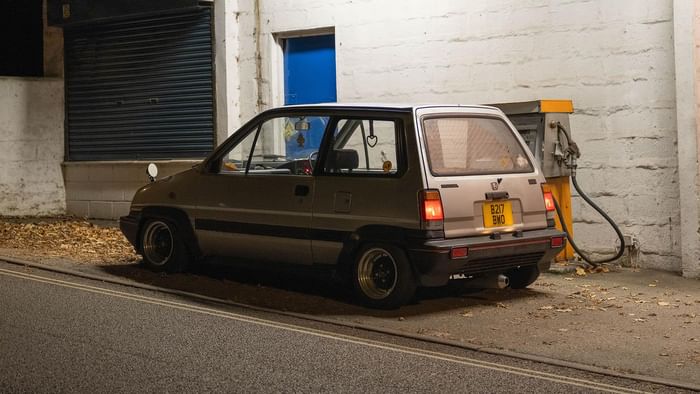
After sorting a few little issues, it was finally MOTd and ready to get modified (or ruined, depending on who you ask). I did write a 2000-word article on how I lowered it using GA3/5 Honda Logo coilovers but my girlfriend said nobody wants to listen to how you fabricated coilover sleeves to fit though the Jazz’s hub carrier, lower control arm and radius rod… I’m inclined to believe her.
Long story short: I was now driving a slammed Japanese toaster (my natural habitat). I could finally take my Suzuki Alto Works off the road and let the Jazz take on daily duties, which was an absolute blast on my 22-mile commute to work. Only one drawback: it looked boring. Tiny wheels, duct tape arches and sunk-in fitment was not the vision I had in my head, so I had to change it.
It was never meant to be a rushed build, but I got roped into applying for a Rollhard event at Bicester Heritage. Dan, the founder of Rollhard, loves small Japanese cars so it got a place right in the centre… I had less than a month to get the car modified and looking interesting.

It didn’t need much to make it look good. I wanted to take styling cues from the City Turbo, so wide arches were a must. It also needed the usual wide wheels, splitter and side skirts to go with the arches. I spent a few hours going though options and sifting through the 17-year-olds selling eBay bolt-on arches, until I finally found the ones.
Eagle-eyed readers will have noticed the car they came from. They are, of course, Renault 5 Turbo arches. With some cutting, bending and choice words they managed to fit surprisingly well and so did the side skirts.
As for the wheels, after trying some 13-inch rims in a variety of specs, I settled with some Autostar 12-inch x 6J wheels made for a Mini. I was unsure how they’d fit but after the testing them without tyres, I was a happy boy. They looked outstanding and fit the arches perfectly. The car was finished off with a Mk1 Golf front splitter, a universal oil cooler (not connected of course) and a centre-exit exhaust made from a Honda CB500 silencer.
Isaac Tartaglia recently graduated from Falmouth University where he studied Press and Editorial Photography. He enjoys researching and writing about certain car cultures and trends, as well as interviewing people with a passion for interesting vehicles. His ambition is to work with the automotive industry, ideally as a journalism.
Petrolblog is keen to support young enthusiasts, which is why it has offered Isaac the opportunity to showcase his work on the site. You can also view his portfolio by visiting his website.
